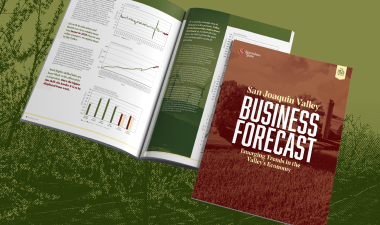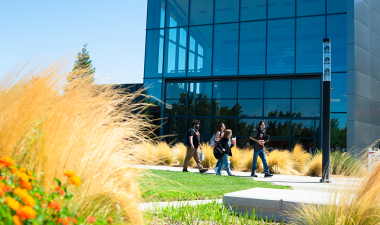After registering real gross domestic product negative growth during the first and second quarters of 2022, the Valley economy officially entered a recession.
While the labor market is tight and unemployment rates are gradually rising, there are increased concerns that rate hikes by the Federal Reserve to bring down inflation will steer the economy into a hard landing.
That is the outlook for the coming year according to the biannual San Joaquin Valley Business Forecast produced by Gökçe Soydemir, the Foster Farms endowed professor of business economics at Stanislaus State.
Here are some of the report’s highlights:
EMPLOYMENT
All employment categories except for financial activities grew in 2022, and total employment in all counties grew at rates significantly higher than their respective long-term benchmark growth rates. Valley total employment is likely to decline in 2023 but will display some growth in 2024.
REAL ESTATE
The most concerning indicator to watch is the 30-year fixed interest rate, which began to display the steepest increase ever seen in the series. In 2022, housing permits rose 18.92 percent, and home values increased 21.46 percent, bringing back worries of a housing market bubble. The double-digit increases in home values seen in 2022 and 2021 do not appear to be sustainable, and a correction back to rates more in line with benchmark growth rates is expected.
PRICES AND INFLATION
During 2022, the average rate of inflation stood at 8.29 percent while average weekly wages rose 3.28 percent, resulting in a fall in real wages and a remarkable loss of purchasing power that is expected to continue in the coming months. Other factors putting upward pressure on overall price levels are the ongoing Ukraine-Russia war and unresolved supply chain issues. Although inflation is likely to decline at very gradual rates, a fall to the Federal Reserve’s target rate of 2 percent is not likely to occur in the very near future.
BANKING AND CAPITAL MARKETS
There was a clear change in the dynamics of the Valley’s community bank total deposits and net loans. Valley total bank deposits rose 9.57 percent in 2022 — about half the rate seen in 2020 and 2021. There was no additional growth whatsoever in Valley net loans and leases, reflecting the stricter stance of community banks in extending loans. Valley community bank assets in nonaccrual began trending more steeply in 2022 than in 2021 and are more likely to increase if the unemployment rates continue to rise. Community bank assets in default 30 to 89 days and assets in default 90-plus days displayed a steeper increase in 2022 than previous years.
ABOUT THE REPORT AND THE AUTHOR
Gökçe Soydemir’s biannual Business Forecast provides projections for the Valley's labor market, regional housing conditions, prices and inflation, banks and other depositary institutions and capital markets. Soydemir and his team use a unique forecasting model that produces lower and upper statistical confidence bands with results that are expected to fall within this range. Soydemir joined Stanislaus State as the Foster Farms endowed professor of business economics in 2011. He brings strong expertise and experience in business analysis and forecasting and has published extensively on applied econometrics, regional economics, financial forecasting, market analysis and international finance.



